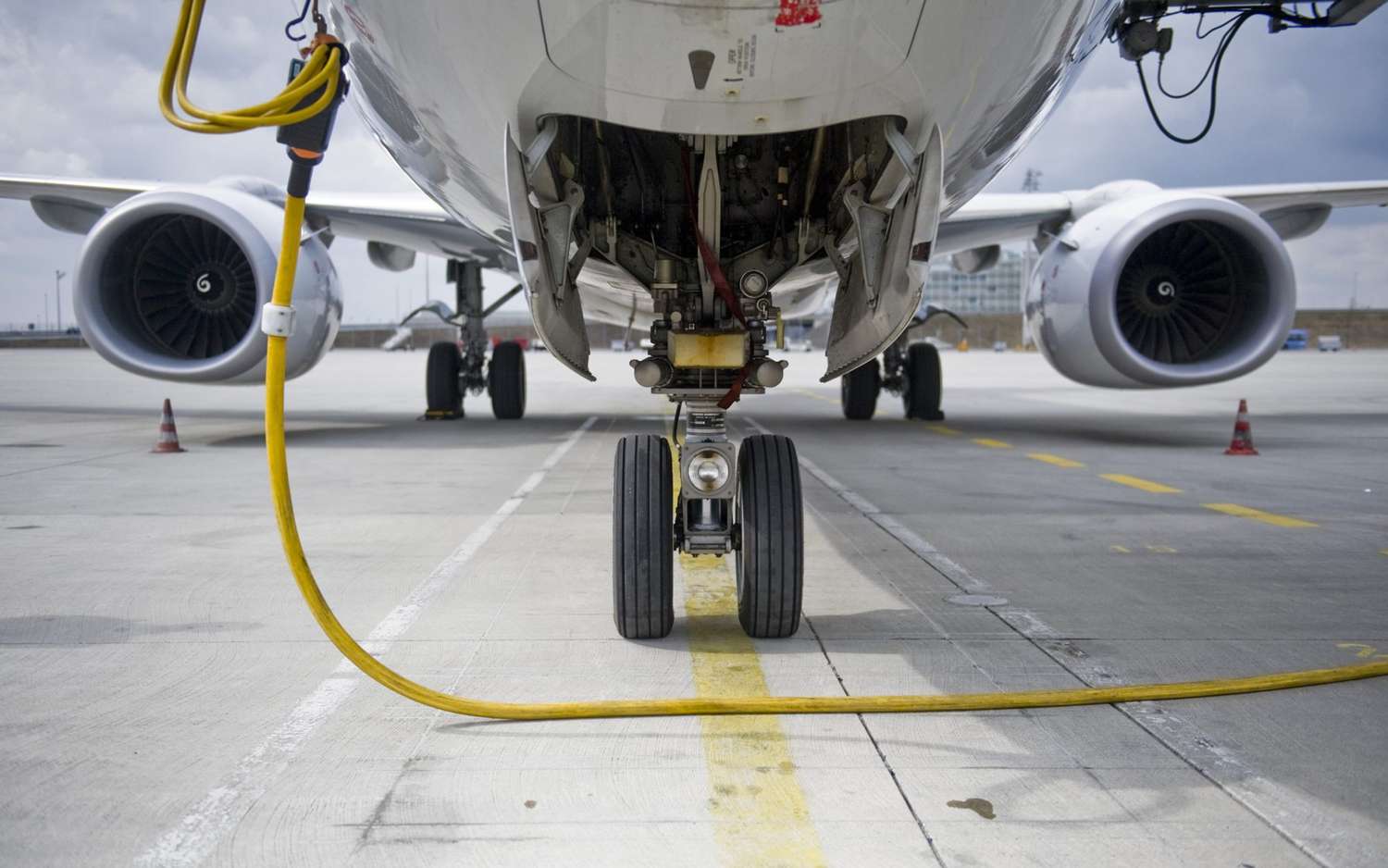If you’ve ever wondered where airplanes store all that fuel needed to power their massive jet engines, you’re not alone.
Fuel is one of the most important elements that allow airplanes to function, but the fuel systems on airliners are complex and extensive.
In this comprehensive guide, we’ll provide a detailed overview of where and how fuel is stored on different types of aircraft.
If you’re short on time, here’s a quick answer to your question:
Fuel Storage on Large Commercial Airliners
When it comes to large commercial airliners, fuel storage is a crucial aspect of their design. These aircraft are designed to carry a significant amount of fuel to support long flights and ensure uninterrupted travel.
Let’s take a detailed look at the various fuel storage systems on these planes.
Wing Tanks
One of the primary locations for fuel storage on large commercial airliners is in the wing tanks. These tanks are located in the wings and can store a substantial amount of fuel.
The wing tanks are designed to maximize fuel capacity while maintaining the structural integrity of the aircraft.
The positioning of the wing tanks also helps to maintain stability and balance during flight. In some cases, the wings themselves are designed to act as fuel tanks, utilizing the available space efficiently.
Fuselage or Belly Tanks
In addition to wing tanks, some commercial airliners also have additional fuel storage in the fuselage or belly of the aircraft.
These tanks are located in the lower portion of the aircraft’s body and are often used to store extra fuel for extended range flights.
The fuselage or belly tanks are strategically placed to distribute the weight evenly and maintain stability during flight.
This additional fuel storage allows for increased flexibility in route planning and enables airlines to operate long-haul flights without the need for frequent refueling stops.
Fuel Pumps and Distribution
Efficient fuel distribution is crucial for maintaining the stability and performance of an aircraft. To facilitate this, large commercial airliners are equipped with fuel pumps and an intricate fuel distribution system.
Fuel is transferred from the storage tanks to the engines through a series of pumps, valves, and pipes.
This system ensures a steady and controlled flow of fuel to the engines, optimizing fuel efficiency and maintaining the aircraft’s balance.
Safety measures are also in place to prevent fuel leaks or any other potential hazards.
Fuel Systems on Small Propeller Aircraft
When it comes to small propeller aircraft, the fuel system is an essential component that ensures the smooth operation of the aircraft. Let’s take a detailed look at the various aspects of the fuel system on these aircraft.
Wing Tanks
One of the primary locations where fuel is stored in a small propeller aircraft is in the wing tanks. These tanks are located within the wings and are designed to maximize fuel storage capacity while maintaining the aircraft’s balance and stability.
The fuel is stored in specially designed fuel cells or bladders, which help prevent fuel leaks and ensure safety.
The location of the wing tanks also plays a crucial role in maintaining the aircraft’s center of gravity. By placing the fuel in the wings, it helps distribute the weight evenly and improves overall stability during flight.
Fuel Gauges and Management
Proper fuel management is crucial in any aircraft, and small propeller aircraft are no exception.
These aircraft are equipped with fuel gauges that provide pilots with real-time information about the amount of fuel remaining in the tanks.
This information allows pilots to make informed decisions about fuel consumption and plan their flights accordingly.
Additionally, small propeller aircraft often have fuel management systems that help optimize fuel usage.
These systems monitor fuel flow, calculate fuel burn rates, and provide pilots with accurate data to ensure efficient fuel consumption throughout the flight.
Fuel Injection Systems
Small propeller aircraft are typically equipped with fuel injection systems that deliver fuel to the engine’s combustion chambers.
These systems ensure a precise and controlled flow of fuel, resulting in better engine performance and fuel efficiency.
The fuel injection systems in these aircraft are designed to atomize the fuel into small particles, allowing for better mixing with air and promoting more efficient combustion.
This leads to improved power output and reduced fuel consumption, making these aircraft more environmentally friendly and cost-effective.
It’s important to note that fuel injection systems require proper maintenance and periodic inspections to ensure they are functioning optimally.
Regular checks and cleaning of fuel injectors are essential to prevent clogs and maintain peak performance.
Understanding the fuel systems on small propeller aircraft is crucial for pilots and aviation enthusiasts alike.
These systems play a vital role in the safe and efficient operation of these aircraft, ensuring smooth flights and enjoyable experiences for all on board.
Fuel Types Used in Aviation
When it comes to aviation, different types of fuel are used depending on the aircraft and its specific requirements. The two main types of fuel used in aviation are AvGas and Jet Fuel. Let’s take a closer look at each:
AvGas
AvGas, short for Aviation Gasoline, is a specialized type of fuel used in piston-powered aircraft. It is a high-octane fuel that contains lead, which helps improve the performance and efficiency of the engine.
AvGas typically has a blue color to distinguish it from other fuels.
One of the main advantages of AvGas is its availability at smaller airports and airfields, which are more commonly used by general aviation aircraft.
This makes it a convenient choice for pilots flying smaller planes.
It’s important to note that AvGas is not suitable for turbine engines, which are commonly found in larger commercial aircraft. These engines require a different type of fuel.
Jet Fuel
Jet Fuel, also known as aviation turbine fuel (ATF), is the most common type of fuel used in commercial and military aircraft with turbine engines. It is a specialized kerosene-based fuel that is designed to meet the specific requirements of jet engines.
Jet Fuel is highly refined and purified to ensure optimal performance and safety.
It has a lower flashpoint and a higher energy density compared to AvGas, making it more suitable for high-performance engines found in jet aircraft.
There are different grades of Jet Fuel available, such as Jet A and Jet A-1, which have slightly different specifications depending on the region and climate.
These fuels are widely available at airports around the world and are typically delivered through specialized fuel trucks.

Fuel Capacity and Consumption Rates
When it comes to aircraft fuel systems, understanding the fuel capacity and consumption rates is crucial. This knowledge is essential for flight planning, determining range requirements, and maximizing efficiency.
Range Requirements
Range requirements play a significant role in determining the fuel capacity of an aircraft. Different types of aircraft have varying range capabilities, which depend on factors such as engine power, weight, and aerodynamics.
For example, commercial airliners like the Boeing 747 have a much greater range than smaller regional jets. The range requirement for an aircraft is the distance it needs to travel without refueling.
This distance varies depending on the purpose of the flight, whether it is a short domestic trip or a long-haul international journey.
Calculating the fuel capacity needed for a specific range requirement involves considering the aircraft’s fuel consumption rate.
The fuel consumption rate is typically expressed in gallons per hour (GPH) or pounds per hour (PPH) and varies depending on the aircraft’s speed, altitude, and engine efficiency.
Aircraft manufacturers provide detailed information on fuel consumption rates for different flight conditions, allowing pilots and operators to determine the necessary fuel load for specific ranges.
Maximizing Efficiency
Efficiency is a key consideration in aircraft fuel systems. Airlines and operators strive to maximize fuel efficiency to reduce costs and minimize environmental impact. Various strategies are employed to achieve this goal.
One approach is optimizing flight routes and altitudes to take advantage of favorable winds and reduce drag.
By flying at higher altitudes where the air is thinner, aircraft can reduce fuel consumption due to lower air resistance.
Additionally, technologies such as winglets are used to improve aerodynamics and reduce fuel consumption by reducing drag.
Another way to maximize efficiency is through weight management.
Lighter aircraft consume less fuel, so airlines employ measures to reduce weight, such as using lightweight materials, minimizing unnecessary equipment, and optimizing cargo and passenger loads.
Furthermore, advancements in engine technology have significantly improved fuel efficiency. Modern aircraft engines are designed to burn fuel more efficiently, resulting in reduced consumption rates and lower emissions.
This not only benefits airlines financially but also contributes to the overall sustainability of air travel.
Safety and Maintenance Considerations
Redundancy and Fail-Safes
When it comes to aircraft fuel systems, safety is of utmost importance. To ensure the safe storage and transportation of fuel, aircraft manufacturers incorporate redundancy and fail-safes into their designs.
This means that even if one component fails, there are backup systems in place to prevent any catastrophic incidents. For example, modern aircraft have multiple fuel tanks located in different areas of the plane.
This distribution of fuel tanks helps to distribute the weight evenly and minimize the risk of imbalance during flight.
In addition to redundant fuel tanks, aircraft fuel systems also have backup fuel pumps and valves.
These redundancies ensure that if one pump or valve malfunctions, there are alternative mechanisms to maintain fuel flow and prevent any disruptions to the aircraft’s operation.
Furthermore, aircraft fuel systems are equipped with safety features such as pressure relief valves and filters. These valves relieve excess pressure in the fuel system, preventing any potential damage or explosion.
Filters are used to remove impurities from the fuel, ensuring that only clean fuel reaches the engines. Regular maintenance and inspections of these safety features are conducted to ensure their effectiveness and reliability.
Inspections and Quality Control
To ensure the integrity of aircraft fuel systems, regular inspections and quality control measures are implemented.
Aviation authorities and manufacturers have stringent guidelines and regulations in place to ensure that fuel systems are properly maintained and meet safety standards.
Inspections of fuel tanks, pumps, valves, and other components are conducted at regular intervals.
These inspections involve visual checks, functional tests, and non-destructive testing methods to identify any potential issues or defects.
Any necessary repairs or replacements are carried out promptly to ensure the continued safe operation of the aircraft.
Quality control measures are also implemented during the manufacturing process of aircraft fuel systems. Stringent testing and quality assurance procedures are in place to ensure that the components and systems meet the required standards.
This includes testing for durability, reliability, and resistance to extreme conditions.
Aviation authorities, such as the Federal Aviation Administration (FAA), play a crucial role in ensuring the safety of aircraft fuel systems.
They conduct regular audits and inspections of aircraft and their fuel systems to ensure compliance with safety regulations.
These inspections help maintain the highest standards of safety and minimize the risk of fuel-related incidents.
It is important to note that maintaining and inspecting aircraft fuel systems is a collaborative effort between the manufacturers, airlines, and regulatory bodies.
By adhering to strict safety protocols and conducting regular inspections, the aviation industry ensures the safety and reliability of aircraft fuel systems.
Conclusion
In summary, aircraft fuel systems are complex, precisely engineered components that are critical to flight.
While fuel is most often stored in wing tanks and fuselage tanks, the specifics vary greatly depending on the size and type of aircraft.
Safety through redundant systems and rigorous maintenance is paramount. Understanding where fuel is stored and how it is managed gives insight into the incredible technology that powers modern air travel.






